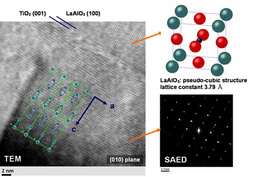New Economic Geographies of Geopolitical Crises
Published in Social Sciences, Economics, and Law, Politics & International Studies

In an era of increasing geopolitical instability, the fragility of global trade networks, supply chains, and critical infrastructure has become more apparent than ever. Conflicts, economic sanctions, and shifting political alliances are reshaping trade routes, investment flows, and resource dependencies, challenging long-standing economic geographies. From the war in Ukraine disrupting energy corridors to U.S.-China tensions altering manufacturing landscapes, crises are forcing states and businesses to reconsider how and where economic activities are organized.
Geopolitical Shocks and Trade Disruptions
One of the most immediate impacts of geopolitical crises is the destabilization of critical trade and value chains. When conflicts erupt, traditional supply routes can become inaccessible, forcing businesses and governments to find alternative solutions. The war in Ukraine, for example, has significantly disrupted the flow of wheat, oil, and natural gas, particularly affecting markets in Europe and Africa. Before the war, Ukraine and Russia together supplied nearly 30% of the world’s wheat exports, but port blockades and sanctions led to shortages, soaring food prices, and new supply chain realignments.
Similarly, China-U.S. tensions over trade and technology have prompted companies to diversify supply chains, leading to increased investment in Southeast Asia, Mexico, and India. The semiconductor industry, once heavily reliant on Taiwanese and Chinese production, has seen major shifts as Western nations push for onshoring and friend-shoring strategies to secure critical technologies.
These disruptions highlight how geopolitical crises do not just affect localized economies but restructure global economic flows, forcing states and firms to rethink trade dependencies and strategic partnerships.
Resources and the Geographies of Scarcity
Wars and crises also create new resource geographies, affecting access to key materials like oil, gas, rare earth metals, and food supplies. The Russian invasion of Ukraine forced Europe to reconfigure its energy map, drastically reducing its dependence on Russian gas. The Nord Stream pipeline shutdown and subsequent energy shortages led to an increased reliance on Norwegian gas, liquefied natural gas (LNG) imports from the U.S., and renewable energy expansion.
Meanwhile, the Middle East remains a region where geopolitical instability frequently disrupts energy markets. Attacks on Saudi Arabian oil infrastructure by Houthi rebels in Yemen and tensions in the Strait of Hormuz—a chokepoint for global oil shipping—demonstrate how fragile global energy supply chains remain.
Beyond energy, critical minerals such as lithium, cobalt, and rare earth elements, essential for battery production and green technologies, have become new arenas of geopolitical competition. China currently dominates the global supply of rare earth metals, leading to increasing efforts by the U.S., the EU, and Japan to diversify sourcing from places like Australia, Canada, and Africa. As nations seek to secure resource independence, new alliances and trade corridors are emerging, reshaping the global economic landscape.
Key Logistics Corridors and Hubs Under Threat
Global trade depends on secure and efficient transport corridors, but these lifelines are often disrupted by geopolitical tensions. Some of the most strategic chokepoints and transport routes under threat today include:
- The Suez Canal: Disruptions like the Ever Given blockage in 2021 and security risks from Middle Eastern conflicts highlight the canal’s strategic vulnerability.
- The Panama Canal: Declining water levels due to climate change, along with geopolitical rivalries, are challenging its future as a reliable trade route.
- The Northern Sea Route: Russia is promoting Arctic shipping routes as an alternative to the Suez Canal, but sanctions and military tensions in the region complicate its viability.
- China’s Belt and Road Initiative (BRI): While Beijing has invested heavily in global infrastructure, growing debt burdens, political instability, and shifting alliances have slowed its expansion.
Another critical development is the rise of new trade corridors as alternatives to traditional routes. India, the Middle East, and Europe have proposed a new economic corridor (IMEC) as a counterbalance to China’s BRI, highlighting how geopolitical rivalries are directly reshaping transport infrastructure.
Investment Shifts
As geopolitical tensions mount, countries and corporations are increasingly turning to friend-shoring—the strategy of relocating supply chains to politically allied nations to ensure economic security. This approach has led to:
- U.S. companies shifting semiconductor production to domestic factories, as seen with Intel’s expansion and the CHIPS Act investment in high-tech manufacturing.
- Europe reducing its reliance on China by strengthening trade ties with Vietnam, India, and Mexico for manufacturing alternatives.
- Japan and South Korea investing in Southeast Asian infrastructure to reduce their exposure to China-centric supply chains.
At the same time, regionalization is gaining momentum, as countries seek to reduce vulnerabilities associated with long-distance trade dependencies. The rise of nearshoring, particularly in Mexico for U.S. industries and Eastern Europe for EU markets, signals a broader shift toward more localized production and consumption patterns.
Lessons from Conflict and Crisis
Several geopolitical events provide deeper insights into how economic geographies are rapidly evolving:
- Ukraine War and Europe’s Energy Shift – A complete reconfiguration of Europe’s gas imports, accelerating the transition to renewables and LNG diversification.
- U.S.-China Trade War – A restructuring of global supply chains, with companies diversifying production to avoid tariffs and geopolitical risks.
- Red Sea Attacks and Shipping Disruptions – Recent attacks by Houthi militants on commercial vessels have forced companies to reroute cargo away from key maritime corridors, increasing costs and delays.
- Afghanistan’s Resource Potential – Despite instability, Afghanistan sits on an estimated $1 trillion worth of untapped minerals, drawing interest from China and regional players.
These cases illustrate that geopolitical crises not only disrupt economies but also create new economic opportunities, as nations and businesses adapt to shifting realities.
Conclusion
As geopolitical conflicts intensify, economic geography is entering a new phase of strategic realignments. The global economy is no longer shaped purely by market forces but increasingly by political alliances, security concerns, and nationalistic economic policies.
The future will likely see:
- Greater regionalization of trade and production
- Increasing strategic control over critical resources
- Further investment in secure, alternative trade routes
- More reliance on alliances for economic stability
Understanding these new economic geographies is essential for policymakers, businesses, and researchers. As crises reshape global trade, resource flows, and investment landscapes, adapting to these changes will determine economic resilience in the years to come.





Please sign in or register for FREE
If you are a registered user on Research Communities by Springer Nature, please sign in